It’s a Friday afternoon in late May and in a few hours, the doors to the Central United Methodist Church in Knoxville, Tennessee will open and LGBTQ students from high schools all over the South will pour into the church to celebrate prom.
Inside the fellowship hall, adult volunteers are putting the final touches on the “Under the Sea” decorations. Blue fabric is draped along the ceiling of the dance floor. Sea foam green and white balloons cascade from hoops throughout the room. Along the walls are freshly steamed LGBTQ pride flags representing a range of sexual and gender identities.
The East Tennessee Diversity Prom gives students a night off from worrying about being bullied. And it lets them do things other kids take for granted – like dressing how they want, choosing to wear makeup, and bringing whomever they want as a date.
In Tennessee, 82% of LGBTQ students say they were verbally harassed at school based on their sexual orientation, which is almost 12% higher than the national average, according to GLSEN’s 2017 National School Climate Survey. It also found 71% of LGBTQ students in the state were verbally harassed at school over how they expressed their gender, compared to 59.1% nationally. The LGBTQ education organization spearheaded this year’s 9th annual Tennessee Diversity Prom.
“It’s a chance for people to be their truly authentic selves, even if it’s just for a few hours,” says Aly Chapman, a parent of an LGBTQ student who serves as planning committee chairwoman and co-chair of the East Tennessee GLSEN chapter.
Chapman is at the church early and walking the winding halls looking for her clipboard. She’s bouncing from room to room making sure everything is falling into place.
She wanders down the hall from the dance floor and into a dressing room filled with donated dresses and tuxedos for students to borrow. Three changing stalls line the back wall of the room, and a shelf in the corner has safety pins for a quick alteration. Chapman takes one final look through the garments. She pulls out a cream dress with a small tear in the bottom of the tulle and hides it away. She wants everything perfect for the students, even the donated clothing.
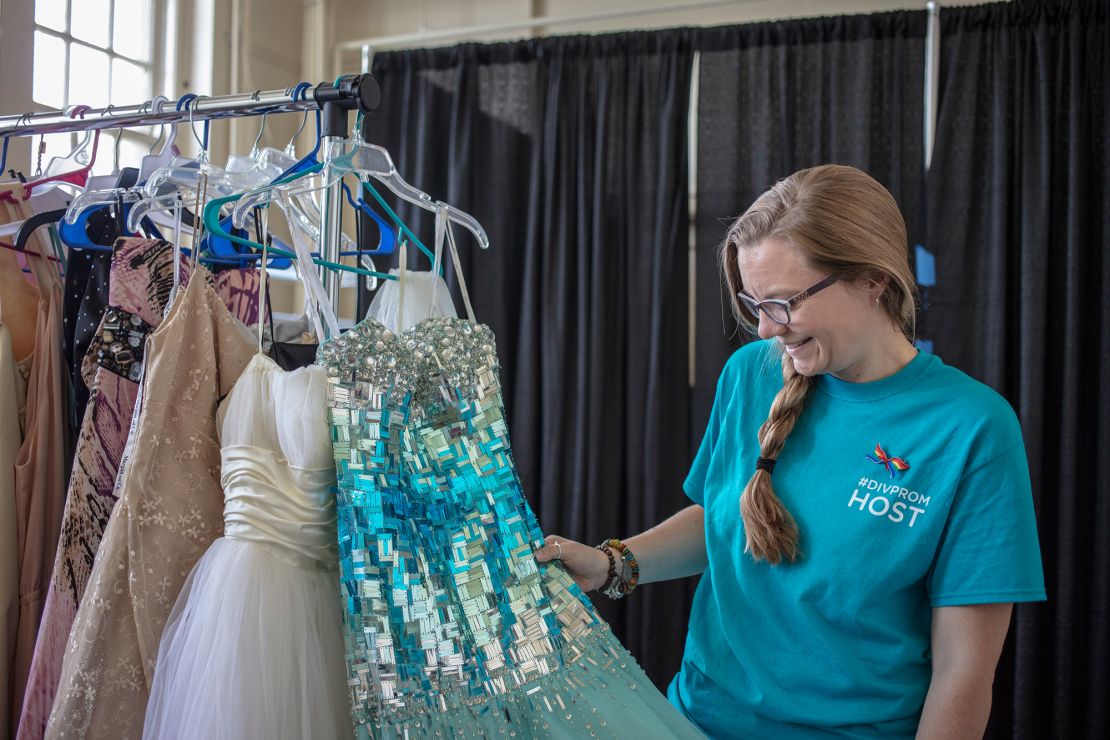
Eventually she finds her clipboard hidden under a box of pronoun pins. Just a few minor details remain, but she is worried.
“What if nobody shows up?” she asks.
Her worries aren’t unsubstantiated. Most students have finished school for the semester and are out of town for Memorial Day. And only 20-something tickets were sold in advance.
But 30 minutes before the event is set to start, a line begins to form outside. And by the end of the night, 137 students will have walked through the double doors of the church lobby and into the prom.
Keeping the prom safe
Before the doors to the prom officially open, Chapman leads all the volunteers into the fellowship hall for a quick speech. She takes a look around at the parents, college students and members of local advocacy groups who have all gathered at the church to lend a hand, and reminds everyone why they’re there. It’s all about the students.
“I just wanted to tell everybody that I love all these kids, and that’s why we’re doing this,” she says. “We’re here to make an impact.”
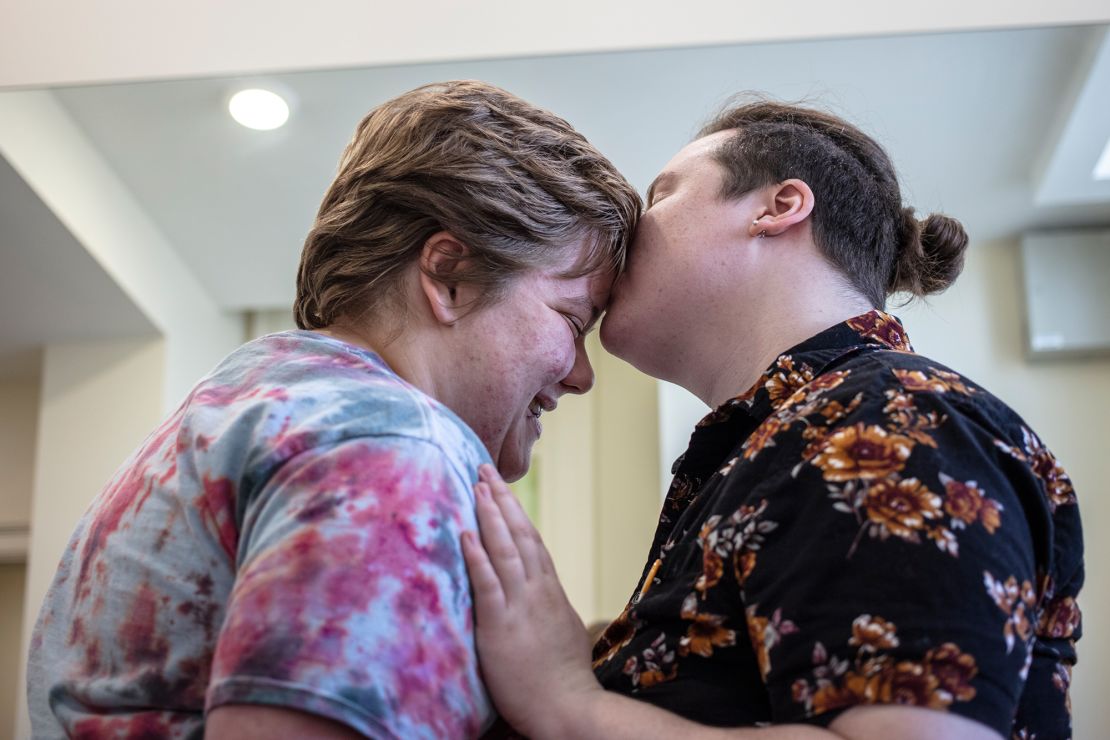
For several of the students who attend DivProm, this is their first time around other students and adults who are members of the LGBTQ community. Chapman says the experience can be a little overwhelming for some students, so regulations are in place to keep the youth emotionally and physically safe.
All volunteers were required to attend a safety training session which touched on topics like what to do if a student has an allergic reaction, and how to support a student who seems emotionally overwhelmed. Organizers also kept a doctor, a social worker, and a child welfare consultant on hand, just in case.
The committee also voted to allow CNN access to the event, and made sure anyone involved with reporting attended the same training sessions as the volunteers. Photographs were allowed only before prom started to protect the attendees’ privacy.
Nailing down the details
A student advisory committee of teens from private, public, and home schools was created to make sure every detail of the event fit the teens’ needs.
For two members of the advisory committee, including an all-genders bathroom was important because it’s a luxury that doesn’t exist at every school. The students asked CNN to omit their last names to protect them from harassment online.
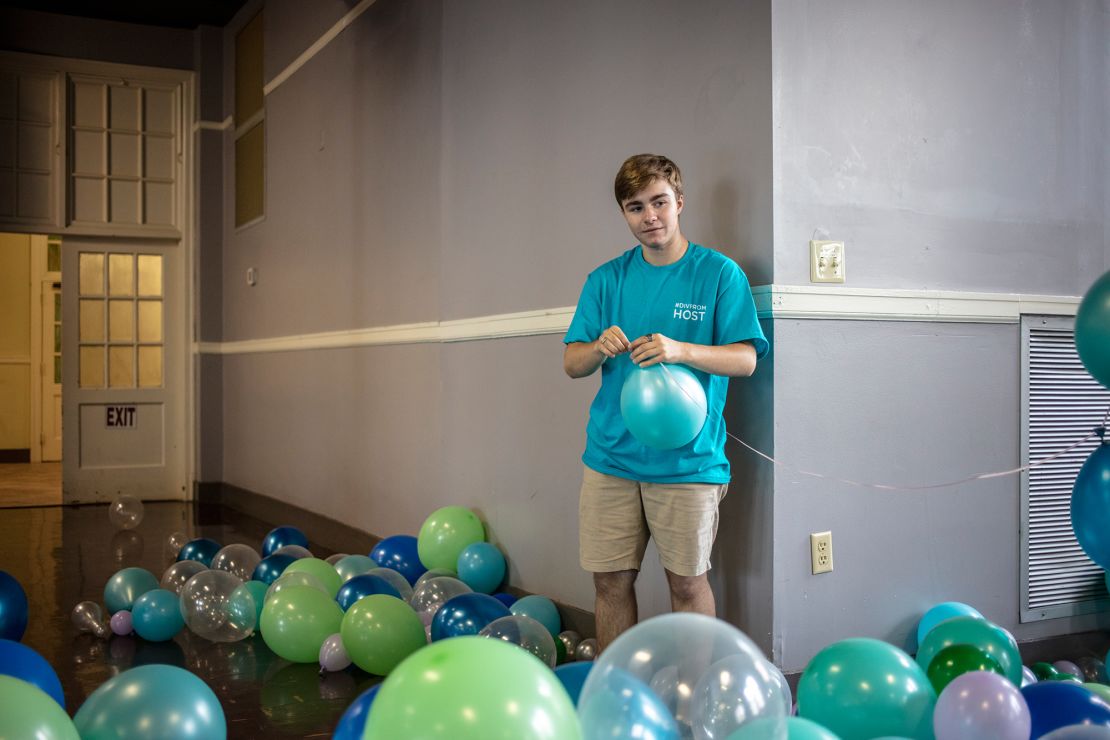
Fox, 17 and the leader of the committee, said that when he first told the officials at his private school he was transitioning his freshman year, they said they would be supportive.
“But for the past two years they haven’t let me use the boys’ bathroom,” Fox said.
Kirby, who also transitioned in high school, says he isn’t allowed to use the boys’ bathroom at his public school either, but is allowed to use one of the single-stall bathrooms.
CNN reached out to the schools for comment.
Despite these issues, the two recognize they are lucky. They say they have a strong support system between friends and family, but they understand not all students have the same experience.
“I’m cognizant of the fact that for a lot of students, Diversity Prom is an event where they finally get one night to be comfortable,” Kirby explained. “And if I can be part of the process to let that flourish, then it’s a privilege and an honor.”
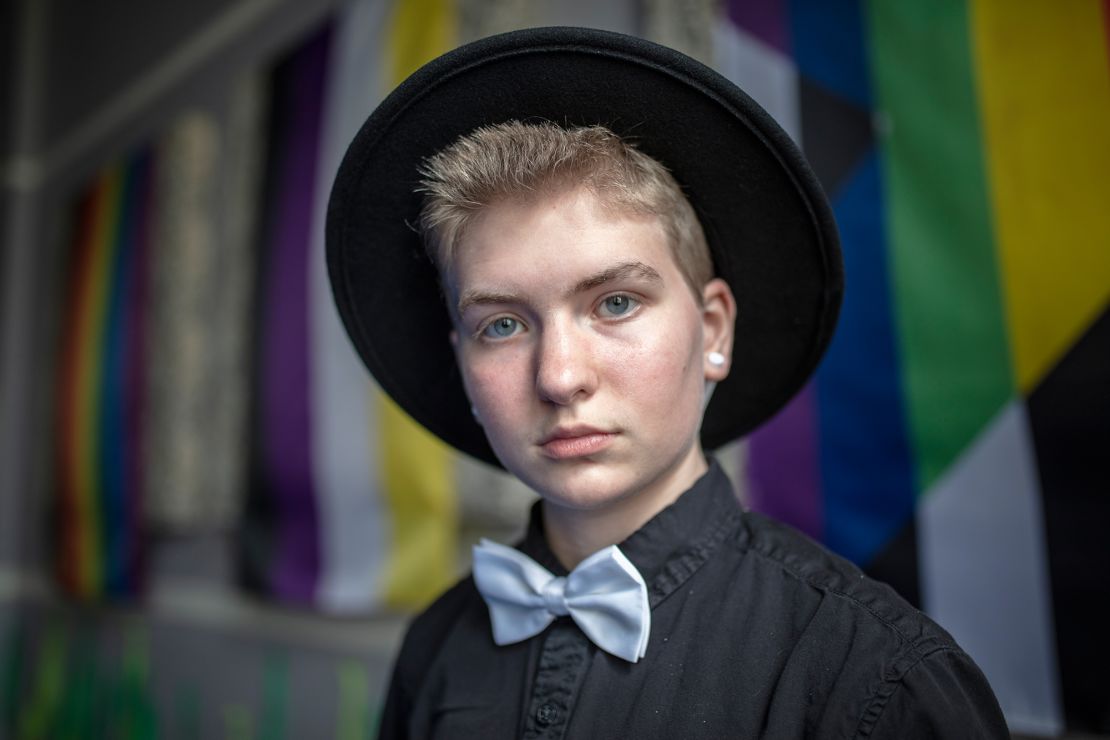
For organizers, accessibility was also important. The cost of attending proms can add up quickly, with some school-sponsored prom tickets running up to $80. So the committees sought donations to help alleviate financial burdens on the students.
Ticket prices were capped at $10. The donated dresses and tuxedos came in all sizes. The department store Dillard’s sent three makeup artists so the students could get their makeup done all night.
Knoxville restaurants donated trays of candied bacon and dozens of pizzas. Kroger gave $500 for last-minute supplies like plates and silverware to help the night run smoothly.
Other donations came from sponsors like the Tennessee Equality Project, the pro-LGBTQ advocacy group that received a $113,000 donation from Taylor Swift this year. While there were some silent donors this year, Chapman fought hard to try and keep them from staying anonymous.
“It’s all about visibility,” she explained. “I want these kids to know that the other 364 days of the year these people, these companies, exist and it’s not just for a moment.”
A night to be themselves
Students begin trickling into the building a little after 7 pm, some with dates and some with friends. At the door they’re offered pronoun pins to wear throughout the evening. They can choose between she/her, he/him, they/them or fill-in-the-blank pins.

Most of the students immediately head to the photo booth run by Chapman’s husband, Greg. They take turns picking out rainbow flags, hats and leis and pose in front of a mermaid backdrop. Only up-close can they tell that the scales are made from glittery plastic plates. Greg prints out copies of the photos and places them on a table for students to collect throughout the evening.
Inside the entryway in front of the fellowship hall, organizations offer mountains of free stickers, bookmarks, bracelets and t-shirts alongside sign-up sheets for events like Knoxville’s Pride parade.
In the fellowship hall, Barb Schneider and Kim Spoon – two adult members from the planning committee – are huddled on the side of the dance floor. The two helped collect and steam the donated clothing, and they’re finally getting their first glimpse of the gowns off the hangers. They notice a student is wearing one of their favorites, a red satin floor-length gown. They grin from ear to ear when they realize the student’s date has a matching red tie.
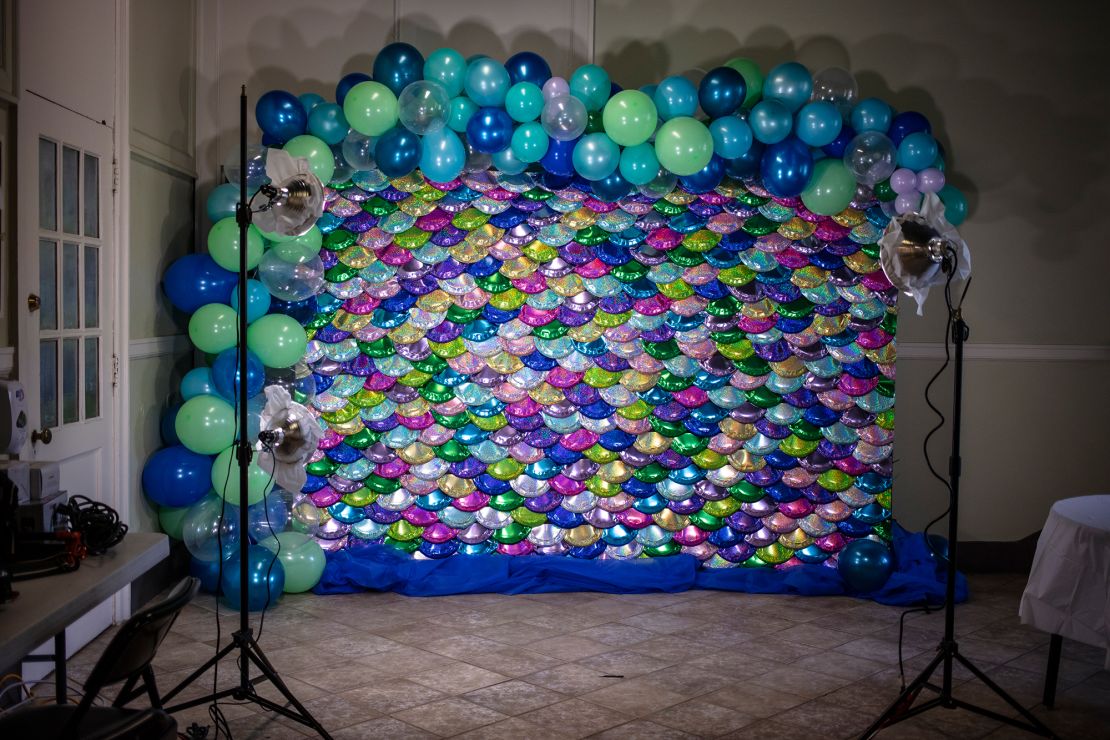
At one point during the evening, two attendees notice a student standing alone near the corner of the room. They quickly approach, ask the student’s name and preferred pronouns, and invite the student to dance to ABBA.
Near the end of the night, an excited scream rings out from the fellowship hall as Panic! At The Disco’s “Girls/Girls/Boys” begins to blast from the speakers. A group of students rush out of the bathroom and immediately head to the dance floor to hear the LGBTQ anthem. Everyone can tell, it’s the song of the night. Some of these students would have been only nine years old when the song came out, but they all know the lyrics by heart.
The dance floor is flooded by a sea of students singing along to the words “girls love girls and boys, and love is not a choice” with the biggest smiles on their faces. This moment is what Chapman said Tennessee’s Diversity Prom is all about. It’s a place where students feel comfortable living as their authentic selves, even if it’s just for a night.


